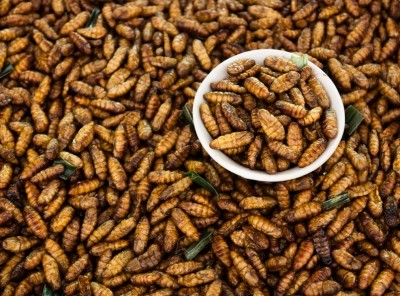Best practice labelling guidelines unveiled for insect-based products

The International Platform of Insects for Food and Feed (IPIFF) has released guidance providing recommendations towards best labelling practices for insects and insect-based products and ingredients in the EU.
IPIFF expects the European Commission to authorise a number of novel food applications in the “near future” and eliminate the barriers for the EU trade of edible insect-based products. It hopes its labelling guidelines its “will prove to be beneficial for actors active on Member State level, but also for FBOs who aim at selling their products in the Single Market.” The recommendations focus on labelling requirements, health and nutrition claims, standards on the labelling of allergens, origin, as well as the responsibilities of operators along the food chain.
Built around the framework of existing regulation (Regulation (EU) 1169/2011 and Regulation (EU) 2015/2283), the publication aims at assisting prospective and active Food Business Operators (FBOs) in the production of insect-based food in order to comply with the relevant labelling provisions.
IPIFF is a non-profit organisation which represents the interests of the insect production sector towards EU policymakers, European stakeholders and citizens. Composed of 52 members, most of which are European insect producing companies, IPIFF promotes the use of insects and insect-derived products as top tier source of nutrients for human consumption and animal feed.
“Despite the young age of our sector, we wish to demonstrate that we act responsibly, adapting our activities to the dynamic EU legislative framework,” said Antoine Hubert, IPIFF’s president.
Insects are a ‘viable complementary source of proteins, minerals and vitamins’
IPIFF also unveiled a factsheet summarising the relevant nutritional and health benefits of edible insects and their potential contribution to a well-balanced diet. “Edible insects are popular in numerous countries across the globe and they are known to be a viable complementary source of proteins, minerals and vitamins,” said Bastien Rabastens, an IPIFF executive committee member.
“We also wish to raise awareness regarding the excellent nutritional properties of edible insects - a label in line with EU best labelling practices is the first step in order to transparently inform consumers,” added Marijn Lanting, chair of the IPIFF working group on 'food safety and consumers'. “During the past years, more and more Europeans wish to integrate edible insects in their diet to combat nutrient deficiencies or as functional food.”
Edible insects have ‘a wide range of applications in the food industry’
The expected future demand for food and animal-derived protein will require environment-friendly novel food sources with high nutritional value. Enthusiasts claim insects may be one of such novel food sources, suggesting they are a nutritionally dense ingredient with a wide range of applications in the food industry.
Insects are often heralded as sustainable source of protein, fibre, minerals, amino acids and vitamins and that production creates imitated greenhouse gas emissions. Crickets produce 11 times more food than cattle for the same amount of feed and require 1,000 times less water than cattle to produce the same amount of protein, according to the Woven Network, the UK-based network for insects as food and feed. The group reckons crickets provide all nine essential amino acids, a full range of B vitamins, are high in zinc, copper, potassium, Omega 3, folates, magnesium and manganese, and a good source of iron and calcium. Mealworms, the group claims, produce at least 14 times fewer greenhouse gas emissions than cattle.
What about insects and allergies?
The IPIFF document contains advice concerning the allergic risks of consuming edible insects. Because insects contain similar allergens to crustaceans, molluscs and dust mites, IPIFF recommends that any FBOs placing insect-based food products on the market include a warning on the label that indicates the similarity of the allergenicity of insects and of crustaceans and products thereof (that currently form an entry in the list of the 14 allergens included in Annex II to the FIC Regulation) and further recommends to refer to allergy to dust mites as well.
A spokesperson from the Woven Network said the lack of research into insects and allergies was 'frustrating'.
He said: “I have to say that I have yet to hear of any cases where someone with an allergy to shellfish has had a serious allergic reaction following eating insect-based material but it is wise to be cautious until this is firmly understood.
“In the absence of such research, the advice they (IPIFF) give seems sound and is followed by our members. We will be promoting this guidance through our forthcoming newsletter to our 550 or so subscribers.”
































